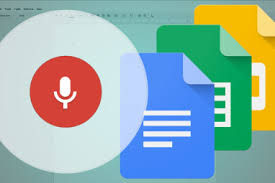 What makes Voice First special for older adults? This blog has discussed the emergence of Voice First technology -- speech-enabled interactions with technology -- on multiple occasions. But this occasion is different -- it marks the publication of a research effort and resulting report linked here called The Future of Voice First Technology and Older Adults 2018. Today's blog post offers a short excerpt of key differences between Voice First technology and prior tech generations that apply to all users – but are unique for seniors -- future research will continue to explore that uniqueness. So what has inspired multiple organizations, including Benchmark Senior Living and Carlsbad by the Sea, to begin their programs? They see that while Voice First technology is an early market with some (noted) limitations, it also represents, unlike prior technology generations, benefits for users. For users and tech managers, Voice First is:
What makes Voice First special for older adults? This blog has discussed the emergence of Voice First technology -- speech-enabled interactions with technology -- on multiple occasions. But this occasion is different -- it marks the publication of a research effort and resulting report linked here called The Future of Voice First Technology and Older Adults 2018. Today's blog post offers a short excerpt of key differences between Voice First technology and prior tech generations that apply to all users – but are unique for seniors -- future research will continue to explore that uniqueness. So what has inspired multiple organizations, including Benchmark Senior Living and Carlsbad by the Sea, to begin their programs? They see that while Voice First technology is an early market with some (noted) limitations, it also represents, unlike prior technology generations, benefits for users. For users and tech managers, Voice First is:
- Easy: Download versions and upgrades are unnecessary. Patch Tuesday for Microsoft users or iOS update reminders are likely not part of the older adult user experience. But the Amazon Echo Show speaks what needs to happen next after the device is powered on, presenting suggestions and tips in large font. A caveat, however – as the Front Porch users discovered, without any prior technology exposure, some training is required, especially to use features to control lights and room temperature.
- Cheap: Device price war put offering within reach – but is there Wi-Fi? The Echo Dot and the Google Home Mini are racing for the bottom of Voice First device price ranges. But they work just as well when spoken to as the largest and most expensive variant. However, Wi-Fi connectivity is a prerequisite – and not a given in many senior communities or private homes.
- Useful: Content can both surprise and impress. Information behind these devices is a constant surprise and delighter. Jokes and weather, but also: streaming music, audio stories, and news. For the tech-phobic, these interactions represent a disruptive change and an experiential upgrade. Cooking timers, alarms and reminders – “It’s 4:00, Did you take your medication?” are part of the basic features. Note these are not interactions, and other than ‘Stop’, do not yet address what happens if you didn’t comply.
- Smart: Last week’s functionality can be forgotten. While not the first cloud-based capability, voice first technologies’ update cycles craft a new user experience. Growing in use, the devices and software increasingly know who you are and can tell you what’s new; remind how functions work; and can be queried and/or trained repeatedly about the same feature – simply by speaking a question. For example, “Alexa, what do you know?” Or “Hey Google, how do I play music?”
- Connected: Home automation just works. For the Front Porch participants at Carlsbad by the Sea, the home automation integration was itself a surprising benefit – learning to control the thermostat, connected light bulbs and outdoor camera. The pilot participants marveled that they could turn on lights, change the room temperature and see who was at the door – all without leaving their chairs.
Here is a hope that you will read the research report which was based on 31 interviews with stakeholders and innovators -- and if you can, also come to the What's Next Boomer Summit in San Francisco on March 28th to hear a thought leader panel discussion of the topic and what's up and what's next with Voice First.
from Tips For Aging In Place https://www.ageinplacetech.com/blog/voice-first-what-you-say-should-help-get-what-you-need
No comments:
Post a Comment
Note: Only a member of this blog may post a comment.